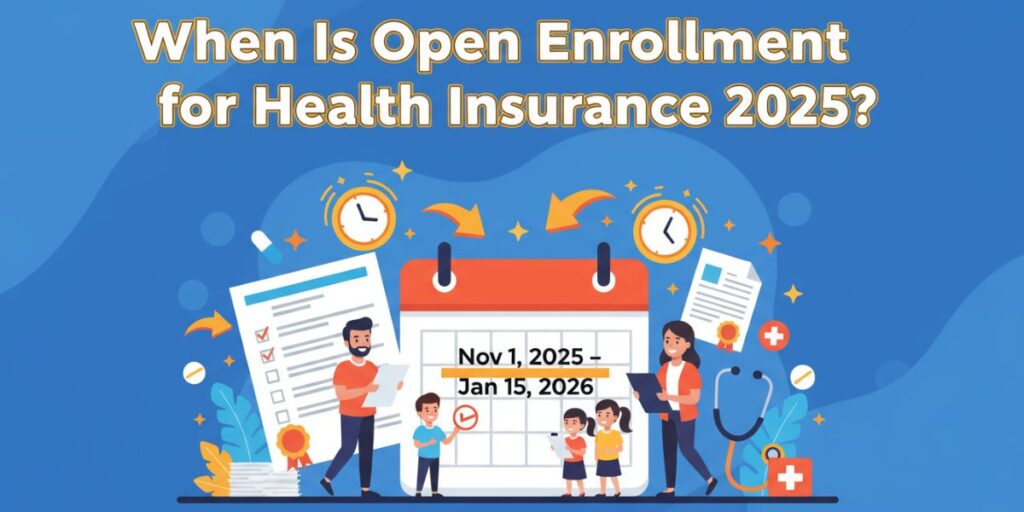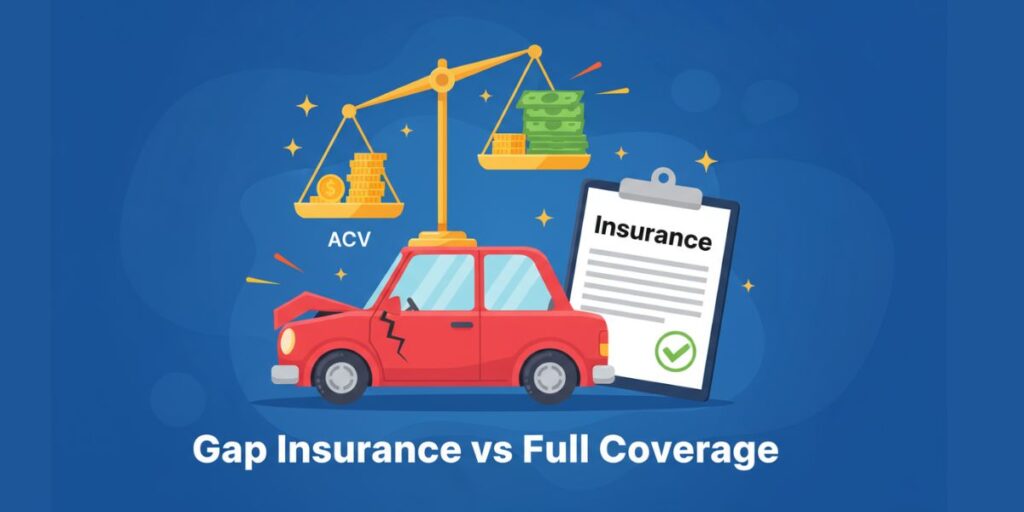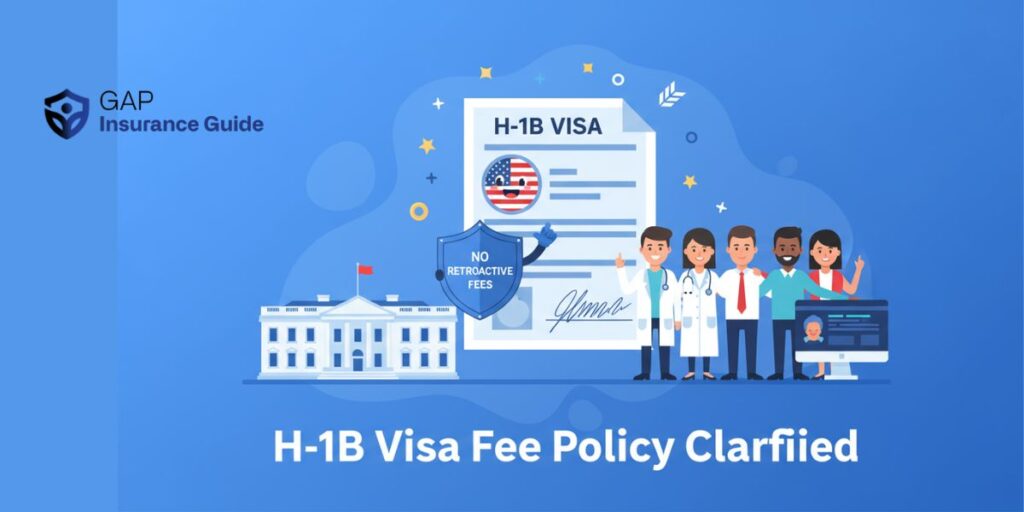For many Americans, health insurance coverage is essential — but knowing when you can sign up is just as important as knowing which plan to choose. Each year, open enrollment sets the window of time when individuals and families can enroll in, renew, or change their health insurance plans. If you miss this opportunity, you may be locked out until the following year unless you qualify for a special enrollment period.
With 2025 just around the corner, here’s everything you need to know about open enrollment dates and what they mean for you.
What Is Open Enrollment?
Open Enrollment is the period each year when you’re allowed to sign up for a new health insurance plan, switch your existing plan, or make changes to your coverage. Once the open enrollment period closes, you can typically only change coverage if you qualify for a special enrollment period — usually triggered by life changes such as marriage, childbirth, loss of coverage, or moving to a new state.
For most people, this is the only chance to review their options and make sure they’re getting the right coverage for their needs and budget.
Marketplace Health Insurance (ACA Plans) for 2025
If you buy insurance through the Affordable Care Act’s Health Insurance Marketplace (Healthcare.gov or your state’s version), here are the key dates for the 2025 enrollment period:
- Open Enrollment Starts: November 1, 2025
- Open Enrollment Ends: January 15, 2026
- Coverage Starting January 1, 2026: You must enroll or make changes by December 15, 2025, and pay your first premium on time.
This applies to Healthcare.gov, which most states use. However, if your state runs its own Marketplace, your enrollment window may be slightly different.
State-Based Marketplace Variations
Several states have their own health insurance Marketplaces with deadlines that don’t always match the federal schedule. For example:
- California: November 1, 2025, through January 31, 2026
- Massachusetts: Enrollment ends January 23, 2026
- Other States: Some extend past the January 15 deadline, while others stick to the federal calendar.
If you live in a state with its own system, check your state Marketplace’s website for exact dates.
Employer-Sponsored Health Insurance
If your coverage comes through your employer, your open enrollment period will not follow the federal Marketplace schedule. Instead:
- Open enrollment typically lasts 2 to 4 weeks.
- Most companies schedule it for October or November to align with the new plan year starting in January.
- Your HR department or benefits administrator should provide specific dates and plan details.
Employer open enrollment is your chance to make changes to your plan, add or remove dependents, or set up pre-tax contributions for things like Health Savings Accounts (HSAs).
Medicare, Medicaid, and CHIP
Not everyone follows the same open enrollment rules. Here are important distinctions:
- Medicare: The Annual Enrollment Period (AEP) runs from October 15 to December 7, 2025. During this time, people already on Medicare can switch between Original Medicare and Medicare Advantage or change prescription drug plans.
- Medicare Initial Enrollment: If you’re turning 65 in 2025, your initial enrollment period starts three months before your birthday month and ends three months after.
- Medicaid and CHIP (Children’s Health Insurance Program): These programs allow enrollment year-round, so if you qualify, you can apply at any time.
What If You Miss Open Enrollment?
Missing open enrollment can limit your options. However, you may still have alternatives:
- Special Enrollment Period: If you experience a qualifying event such as marriage, divorce, childbirth, adoption, or loss of employer coverage, you can enroll outside of the standard window.
- Employer Exceptions: Some companies allow mid-year changes for qualifying events.
- Medicaid/CHIP: Since these programs accept applications year-round, they can provide a coverage option if you meet eligibility requirements.
Tips to Prepare for Open Enrollment
- Mark Your Calendar: Write down the key dates, especially November 1 and December 15, if you want coverage starting January 1.
- Review Your Coverage Needs: Think about your health care usage over the past year — including doctor visits, prescriptions, and any upcoming procedures — to decide if your current plan still fits.
- Compare Costs Beyond Premiums: Look at deductibles, copayments, and out-of-pocket maximums, not just the monthly premium.
- Check State Rules: If you live in a state with its own Marketplace, confirm the exact deadlines since they may differ.
- Plan Ahead: Have documents and information ready so you can apply or make changes without scrambling at the last minute.
| Health insurance through… | When does open enrollment start? | When does open enrollment end? |
| Healthcare.gov | November 1, 2025 | January 15, 2026 |
| California | November 1, 2025 | January 31, 2026 |
| Colorado | November 1, 2025 | January 15, 2026 |
| Connecticut | November 1, 2025 | January 15, 2026 |
| District of Columbia | November 1, 2025 | January 31, 2026 |
| Georgia | November 1, 2025 | January 15, 2026 |
| Idaho | October 15, 2025 | December 16, 2026 |
| Illinois | November 1, 2025 | TBD as they move from Healthcare.gov to their own state-based marketplace |
| Kentucky | November 1, 2025 | January 15, 2026 |
| Maine | November 1, 2025 | January 15, 2026 |
| Maryland | November 1, 2025 | January 15, 2026 |
| Massachusetts | November 1, 2025 | January 23, 2026 |
| Minnesota | November 1, 2025 | January 15, 2026 |
| Nevada | November 1, 2025 | January 15, 2026 |
| New Jersey | November 1, 2025 | January 31, 2026 |
| New Mexico | November 1, 2025 | January 15, 2026 |
| New York | November 1, 2025 | January 31, 2026 |
| Pennsylvania | November 1, 2025 | January 15, 2026 |
| Rhode Island | November 1, 2025 | January 31, 2026 |
| Vermont | November 1, 2025 | January 15, 2026 |
| Virginia | November 1, 2025 | January 15, 2026 |
| Washington | November 1, 2025 | January 15, 2026 |
| Medicare Initial Enrollment Period (if your birthday is not on the first day of the month) | 3 months before your 65th birthday month | 3 months after your 65th birthday month |
| Medicare Initial Enrollment Period (if your birthday is on the first day of the month) | 4 months before your 65th birthday | 2 months after your 65th birthday |
| Medicare General Enrollment Period (if you miss the Initial Enrollment Period)/Medicare Advantage Open Enrollment Period (if you’re already in a Medicare Advantage plan) | January 1, 2026 | March 31, 2026 |
| Medicare Annual Enrollment Period (for those who have had Medicare before) | October 15, 2025 | December 7, 2025 |
| Medicaid | Apply anytime | Apply anytime |
| CHIP | Apply anytime | Apply anytime |
Final Thoughts
Open enrollment is your annual opportunity to take control of your health insurance. For most people, the key dates to remember are November 1, 2025, through January 15, 2026, with a December 15 deadline for coverage starting January 1. If you get insurance through an employer or a state-based Marketplace, check your specific deadlines.
Being proactive during open enrollment ensures you have the coverage you need at a cost you can manage — and helps you avoid costly gaps in protection.
Disclaimer: The content published on Gap Insurance Guide is intended for general information and educational purposes only. We cover topics related to insurance, banking, finance, and trading, but none of the material should be considered financial, legal, or investment advice. While we aim to provide accurate and up-to-date information, we make no guarantees about completeness, reliability, or accuracy. Any actions you take based on our content are strictly at your own risk, and Gap Insurance Guide will not be liable for any losses or damages. We strongly recommend consulting a licensed financial advisor, insurance expert, or other qualified professional before making decisions. Articles may include links to third-party websites, and we are not responsible for their content or practices.
I’m Abhilash, a finance and business content writer passionate about simplifying money matters. I share practical insights on finance, business growth, and insurance to help readers make informed decisions. Through my blogs and articles, I aim to provide clear, reliable, and actionable advice for smarter financial planning and success.



